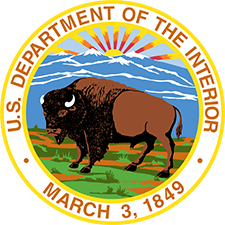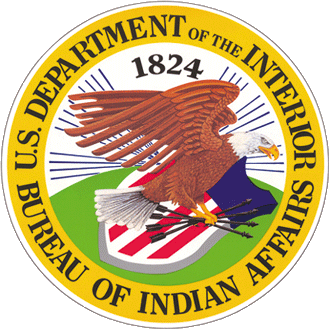Office of Indian Energy and Economic Development
IEED
X'una Kaawu Annee Corporation
Economic Development Through Convenience Store Enterprises
Indian Pueblo Cultural Center
The F/V Pacific Rooster
Redding Rancheria Economic Development Corporation
Ubetcha Wateca, Eagle Butte, ND
Indian Business Incubators Program (IBIP) Resources
I am pleased to invite you to comment on a new proposed regulation to implement the recently enacted Native American Business Incubators Program Act.
Proposed Rule - This proposed rule would implement the recently enacted Native American Business Incubators Program Act. The Indian Business Incubators Program (IBIP), also known as the Native American Business Incubators Program, would be a new program, in which the Office of Indian Economic Development (OIED) would provide competitive grants to eligible applicants to establish and operate business incubators that serve Tribal reservation communities. These regulations establish who is eligible for the program, how to apply, how OIED will evaluate applications and make awards, and how OIED will administer the program.
Reference & Presentation Materials
Additional Information
Additional Resources
Contact Us
Washington, DC 20240
Benefits of Trust Land Acquisition (Fee to Trust)
The General Allotment Act divided tribal lands and lead to many unintended consequences including the dramatic reduction of the amount of land owned by American Indians and Alaska Natives (AI/ANs).
Many years later, the federal government established the trust process in effort to help tribes regain lost lands and promote tribal self-determination. Most tribal lands today are trust lands, which are under the control of tribal governments.
There are currently over 56 million acres of land held in trust by the federal government for the benefit of AI/AN communities.
Fee Land vs. Trust Land
Fee land is under complete control of its owner, which can be an individual or an entity such as a tribe, who holds the title to it. Fee simple ownership is the highest form of property possession. The owner can use the land for any legal purpose.
Trust land is territory, whereby one party agrees to hold title to the property for the benefit of another party. Placing tribal land into a trust is the process where the Department of the Interior acquires the title to a land and holds it for the benefit of a tribe or individual tribal members.
Benefits
There are many benefits to trust acquisitions for tribes.
The use of trust land is governed by tribes and generally not subject to state laws, though certain federal restrictions still apply. Many federal programs and services are also available only on trust lands.
Tribes may benefit from:
- New Market Tax Credits
- Indian Employment Tax Credits
- Tax-Exempt Financing
- Discounted Leasing Rates
- Federal Contracting Preferences
- Foreign Trade Zone Customs Duty Deferral, Elimination or Reduction
- State/County Land Use Exemption
- Accelerated Depreciation for Business Property on Indian Reservations
These benefits have allowed tribes to enhance housing opportunities for their members, realize the energy development capacity on their lands, negotiate the use and sale of the natural resources, and protect tribal ways of life including subsistence hunting and agriculture.
How to Convert Land
All federally recognized American Indian tribes and individuals are eligible to apply for a fee-to-trust land acquisition. An applicant must submit a specific written request for the Secretary of the Interior to take land into trust for the benefit of an applicant. Tribes may submit a tribal resolution to satisfy this requirement.
The request must be submitted to the Bureau of Indian Affairs’ Office of Trust Services.
Additional Information
Related Pages
Related Documents
Contact Us
Washington, DC 20240
The Importance of Tribal Infrastructure
Roads, broadband, energy resources are critical to tribal economies.
Indian Affairs and our partners at other federal agencies are committed to improving and maintaining tribal infrastructure to provide increased public safety, security and economic development opportunities in American Indian and Alaska Native (AI/AN) communities.
What Counts as Infrastructure?
Infrastructure projects continue to grow in scope and complexity and can include projects related to:
- Surface transportation (e.g., highway, rail, and transit projects)
- Broadband internet
- Renewable energy generation
- Electricity transmission
- Airport capital improvement
- Ports and waterways
- Oil or gas pipelines
The federal government often plays a role in reviewing these projects, which often require federal funding, permits, or other authorizations and must adhere to federal laws and regulations.
Broadband
National Tribal Broadband Strategy
Indian Affairs’ National Tribal Broadband Strategy (NTBS) is part of the American Broadband Initiative.
The NTBS highlights the necessary actions needed to spur investment within AI/AN communities. The strategy was developed in collaboration with:
- Department of Commerce, National Telecommunication and Information Association
- Department of Agriculture
- Federal Communications Commission
- Institute of Museum and Library Services
- Department of Education
- White House Council on Native American Affairs
- White House Office of Science and Technology Policy
- White House Office of Management and Budget
It aims to address the broadband disparities facing tribal communities that limit tribal members' access to education, healthcare, and economic resources.
The Office of Indian Economic Development intends to use the strategy to help close the digital divide. The NTBS establishes a policy framework and contains several specific recommendations for federal agencies to promote greater broadband access for tribes.
National Tribal Broadband Grant
The purpose of the National Tribal Broadband Grant (NTBG) program is to bring broadband services to AI/AN communities that need them. NTBG funding recipients can hire qualified consultants to research the potential deployment or expansion of high-speed internet transmitted through DSL, BPL, cable modem, fiber, wireless, and satellite.
Roads and Transportation
Bureau of Indian Affairs (BIA) Road Maintenance Program
The BIA Road Maintenance Program (RMP) is funded by the Department of the Interior and managed by BIA. Through RMP, BIA is responsible for maintaining the over 29,000 miles of roads that are part of its road system. BIA helps to support the empowerment of AI/AN communities by contracting out a significant portion of the program to tribes under the Indian Self-Determination and Education Assistance Act.
Tribal Transportation Program
The Surface Transportation Assistance Act of 1982 established the Indian Reservation Roads Program, which is now called the Tribal Transportation Program (TTP). The total federal construction authorization for tribal transportation is currently over $10 billion. These investments through TTP have contributed to the creation, improvement and maintenance of roads, bridges and other transit and public safety projects on or near tribal lands.
Additional Information
Related Pages
- Expanding Broadband Access
- National Tribal Broadband Grant
- BIA Road Maintenance Program
- Tribal Transportation Program
Related Documents
Contact Us
Washington, DC 20240
indianaffairs.gov
An official website of the U.S. Department of the Interior


